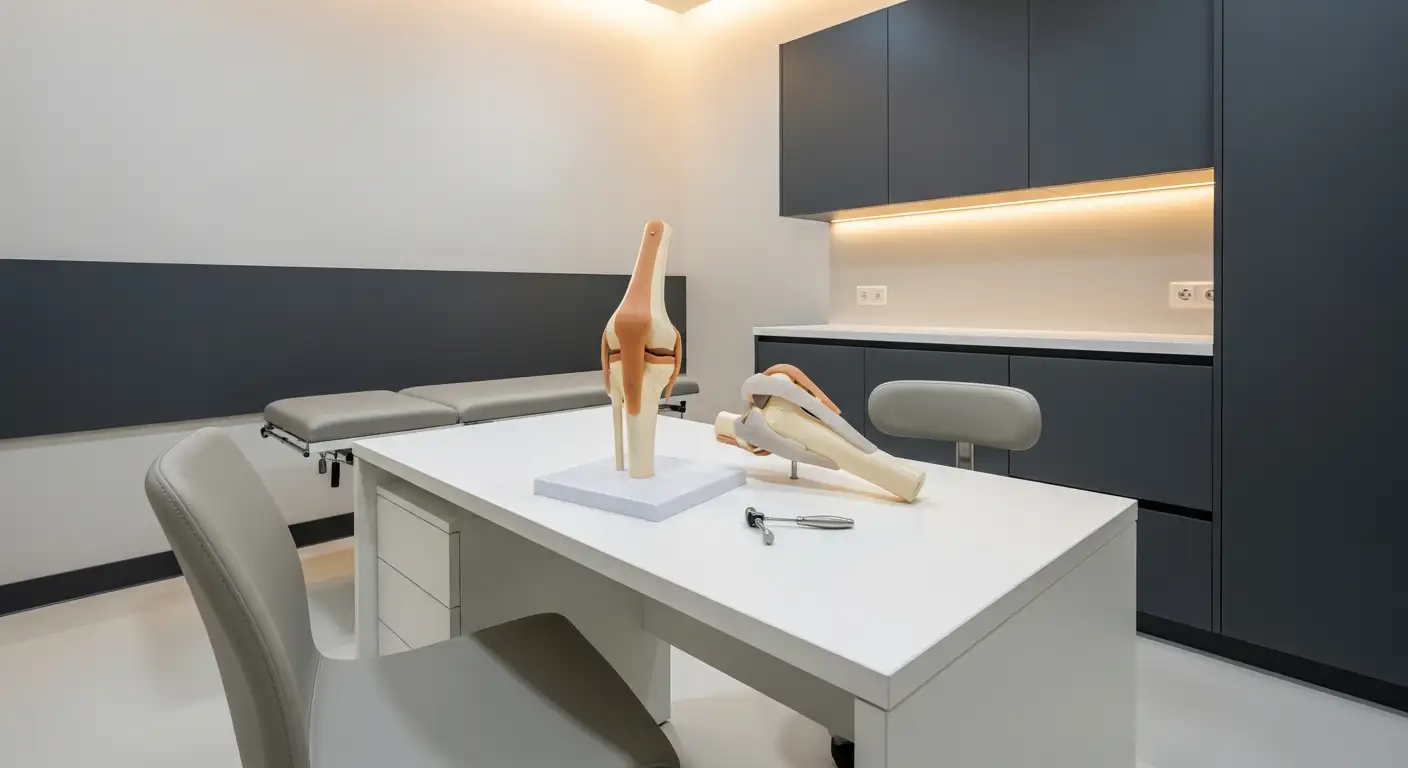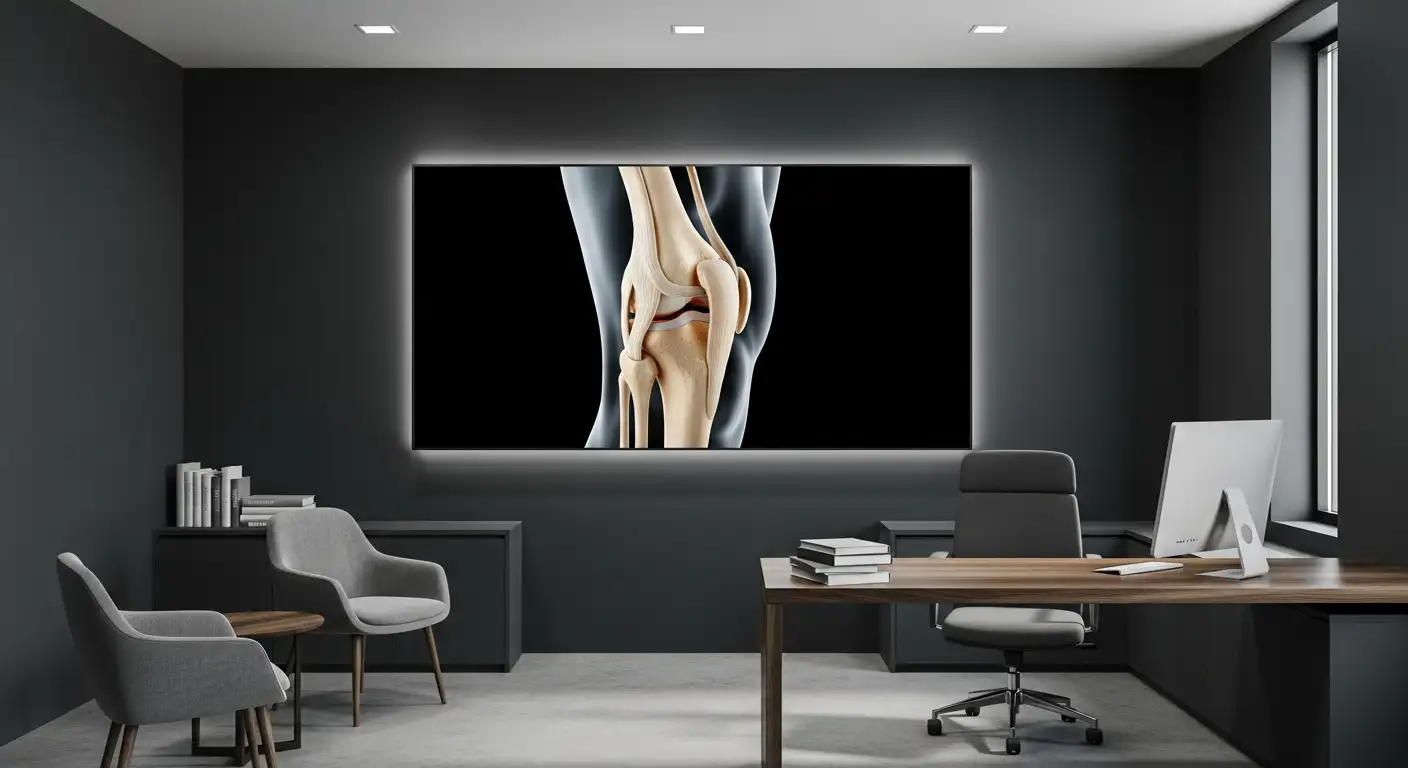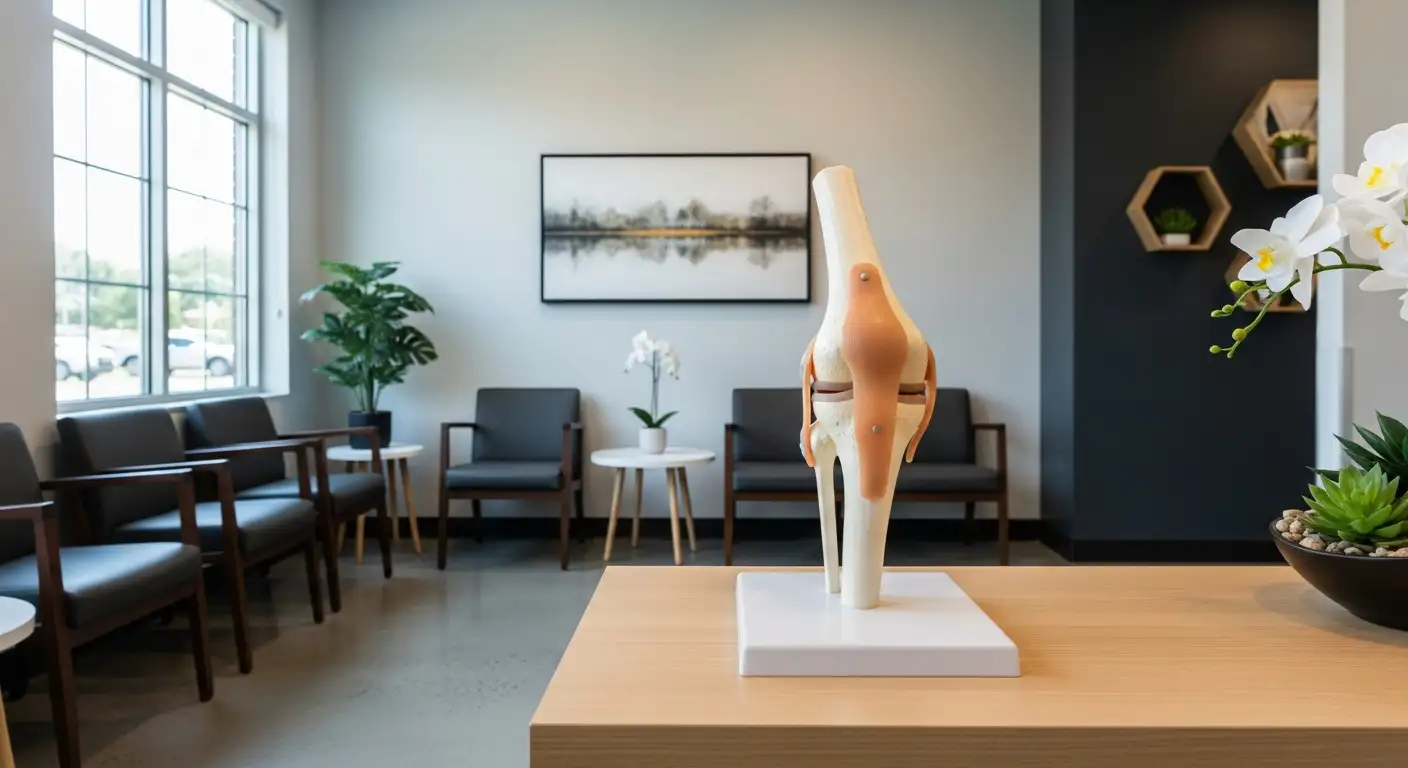Understanding Knee Pain
Knee pain, particularly when straightening the leg, can be a debilitating issue affecting people of all ages. Understanding the causes and underlying anatomy can help in managing the issue more effectively.
Anatomy of the Knee Joint
The knee, one of the most complex joints in the body, is comprised of several key components. This includes the femur (thigh bone), tibia (shin bone), and patella (kneecap). These bones are connected by ligaments and cushioned by cartilage, including the meniscus, which acts as a shock absorber. The area also contains bursae, small sacs filled with fluid that reduce friction between the tissues of the knee. Muscles and tendons around the knee joint support movement and provide stability.
Understanding the intricate structure of the knee joint is essential for identifying the root causes of knee pain when straightening the leg.

Common Causes of Knee Pain
Knee pain when straightening the leg can stem from several conditions, many of which are related to the inflammation or injury of the components of the knee joint. Here are some common causes:
- Knee Bursitis: This condition occurs when the bursae in the knee become inflamed. It can result from repetitive overuse, injury, or arthritis, leading to pain, swelling, and difficulty in moving the knee.
- Torn Meniscus: Often resulting from twisting the knee forcefully during sports activities or heavy lifting, a torn meniscus can cause symptoms including pain, swelling, stiffness, and difficulty fully extending the leg [1].
- Muscular Imbalance: Knee pain can also be due to a muscular imbalance, where one muscle group may be stronger or more overworked than another. This can be common in athletes, particularly runners, due to bad form, or in individuals who perform repetitive daily activities that stress the knee joints.
- Weakened Muscles: Weakened muscles around the knee joint can lead to knee pain during leg straightening. This weakness may be due to lack of use, injury, or underlying conditions such as arthritis. Strengthening exercises and physical therapy can help improve muscle strength and alleviate knee pain.
Recognizing these common causes is the first step in diagnosing and treating knee pain when straightening the leg. It's important to consult a healthcare professional if you experience persistent knee pain, as early diagnosis and treatment can help prevent further complications.
Knee Pain When Straightening Leg
Experiencing knee pain when straightening the leg is a common complaint that could be a sign of various underlying conditions. These can include bursitis, a torn meniscus, or a muscular imbalance around the knee joint. Each of these potential causes of knee pain carries its own set of symptoms, methods of diagnosis, and treatment options.
Bursitis and Knee Pain
Bursitis is a condition that occurs when the bursae, small sacs of fluid that cushion the knee joint, become inflamed. This inflammation can result from repetitive overuse, injury, or arthritis. Those afflicted with knee bursitis may find that the action of straightening the leg triggers knee pain and swelling.
In severe cases, the inflammation may limit movement and make it difficult to fully extend the knee. Early diagnosis and treatment of knee bursitis can help prevent long-term damage and manage the associated pain when straightening the leg [1].
Torn Meniscus and Knee Pain
A torn meniscus is another possible cause of knee pain during leg straightening. The meniscus is a piece of cartilage that provides a cushion between your thighbone and shinbone. It can be torn if you suddenly twist your knee while bearing weight on it.
This type of injury often occurs during sports activities or heavy lifting, triggering symptoms such as pain, swelling, and stiffness. In addition to these symptoms, a torn meniscus can also make it difficult to fully extend the leg [1].
Muscular Imbalance and Knee Pain
Muscular imbalances around the knee joint can also lead to knee pain when straightening the leg. In some cases, one muscle group may be stronger or more overworked than another muscle group, leading to an imbalance.
This can be common in athletes, particularly runners, and in individuals who perform repetitive daily activities that stress the knee joints. This imbalance can cause pain during movements such as straightening the leg. Strengthening exercises and physical therapy can help improve muscle strength and alleviate knee pain.
By recognizing the potential causes of knee pain when straightening the leg, individuals can seek appropriate medical advice and treatment. Early intervention can help to manage pain, improve mobility, and prevent further damage to the knee joint.
Diagnosing Knee Pain
When experiencing knee pain when straightening the leg, it's essential to get an accurate diagnosis to determine the most effective treatment plan. The diagnostic process typically involves a physical examination, imaging tests, and possibly an arthroscopy procedure.
Physical Examination
The first step in diagnosing knee pain is typically a physical examination. A healthcare provider will assess the knee's range of motion, strength, stability, and overall structure. The provider will also inquire about the patient's medical history and the specifics of the pain, such as when it started, its intensity, and any activities that exacerbate or alleviate the pain. If the pain persists despite conservative methods like resting, icing, or using pain medication, seeking medical attention is advisable. Sudden sharp knee pain, mobility issues, or symptoms like clicking or popping in the knee should also prompt a visit to a medical professional.
Imaging Tests
Imaging tests provide a detailed view of the knee structure, helping to identify any abnormalities or injuries that could be causing the pain. These tests may include X-rays, which can reveal issues with the bones, or MRI scans, which can provide a detailed view of the soft tissues, including the ligaments, tendons, and cartilage. These tests are crucial in diagnosing conditions such as torn meniscus or bursitis, which can cause knee pain when straightening the leg.
Arthroscopy
In some cases, a healthcare provider might recommend an arthroscopy to examine the inside of the knee joint. This minimally invasive procedure involves inserting a small camera, known as an arthroscope, into the knee joint. This allows the provider to visualize the internal structures of the knee, identify any abnormalities, and possibly treat the issue during the same procedure. Arthroscopy can be particularly useful in diagnosing and treating conditions that may not be visible through imaging tests alone.
It's important to remember that if the knee pain when straightening the leg is associated with severe swelling, redness, warmth in the affected area, inability to bear weight on the leg, or fever, immediate medical attention is recommended. These could be signs of a serious condition that requires prompt treatment [3].
In conclusion, diagnosing knee pain when straightening the leg involves a combination of physical examination, imaging tests, and possibly arthroscopy. Once a diagnosis has been made, a healthcare provider can recommend the most appropriate treatment options, which may include physical therapy, medications, injections, or surgery, depending on the individual's condition and medical history.
Treating and Managing Knee Pain
Addressing knee pain when straightening the leg involves various treatment options, depending on the severity of the pain and the underlying cause. These treatments may include physical therapy and exercises, medications and injections, and in some cases, surgery.
Physical Therapy and Exercises
Physical therapy and exercises are often the first line of treatment for managing knee pain. Strengthening the quadriceps, hamstrings, and calf muscles through targeted exercises can help alleviate pain and improve flexibility when straightening the leg. Stretching exercises can also address muscular imbalances, improving strength, and flexibility, thus reducing reliance on overworked muscles that can lead to pain and injury.
Physical therapy sessions may also include other modalities such as heat or cold therapy, ultrasound, or electrical stimulation to help manage knee pain.
Medications and Injections
Over-the-counter pain relievers, such as nonsteroidal anti-inflammatory drugs (NSAIDs), can help reduce pain and inflammation when dealing with knee pain. In some cases, corticosteroid injections may be recommended to provide temporary relief.
It's crucial to consult with a healthcare provider to understand the most appropriate medication or injection for individual circumstances, as each person's situation and tolerance may vary [4].
Surgery
In certain cases, surgery may be necessary to address the underlying causes of knee pain when straightening the leg. Depending on the specific condition, surgical options may include arthroscopy, which allows for examination and treatment of the knee joint using minimally invasive techniques, or more extensive procedures such as ligament reconstruction or joint replacement.
A healthcare provider can help determine if surgery is the appropriate course of action based on the individual's condition and medical history. Surgical interventions are typically considered when conservative treatments have not provided sufficient relief or when there is significant damage to the knee joint.
By exploring these treatment options, individuals suffering from knee pain when straightening the leg can find relief and return to their daily activities with less discomfort. Always consult with a healthcare professional for personalized advice and treatment plans.
Preventing Knee Pain
Prevention is always better than cure, and this statement holds true for knee pain as well. By making certain lifestyle modifications and incorporating regular exercise and stretching techniques, one can significantly reduce the risk of experiencing knee pain when straightening the leg. Early diagnosis also plays a vital role in managing knee pain effectively.
Exercise and Stretching Techniques
Regular exercise and stretching can help to prevent knee pain by improving strength, flexibility, and range of motion. It also reduces reliance on overworked muscles that can lead to pain and injury.
Inactivity and prolonged sitting can cause tight hamstrings, which in turn can contribute to knee pain if not properly stretched. Tight hamstrings limit muscle potential, leading to pain in the muscle or knee. Therefore, incorporating hamstring stretches into your fitness routine can significantly help in managing knee pain.
Moreover, strengthening the core and gluteal muscles can indirectly strengthen the knee joint, as all muscles in the body are interconnected. This can help to prevent knee injuries and pain.
Lifestyle Modifications
There are several lifestyle modifications that can help in preventing knee pain. These include maintaining a healthy weight, avoiding high-impact activities that strain the knees, and wearing supportive footwear.
In addition, it's crucial to use proper techniques during physical activities to reduce the risk of injury. This may involve learning the correct form for exercises and sports, or using ergonomic furniture and equipment at work.
Importance of Early Diagnosis
Knee pain when straightening the leg can be due to various factors like arthritis, knee injuries, or overuse injuries. Therefore, it's essential to consult a healthcare provider for an accurate diagnosis and appropriate treatment if you experience consistent knee pain.
Early diagnosis and treatment can help to prevent further damage to the knee joint and enable more effective management of the pain. Regular check-ups and monitoring can also help to detect any changes in the condition of the knee, allowing for timely interventions and adjustments in treatment.
In conclusion, preventing knee pain involves a combination of regular exercise and stretching, lifestyle modifications, and early diagnosis. By taking proactive steps, it's possible to maintain knee health and avoid the discomfort associated with knee pain when straightening the leg.
References
[1]: https://www.mayoclinic.org/diseases-conditions/knee-pain/symptoms-causes/syc-20350849
[2]: https://www.hss.edu/article_stretches-exercises-knee-pain.asp
[3]: https://www.mayoclinic.org/symptoms/knee-pain/basics/when-to-see-doctor/sym-20050688
[4]: https://www.sgpainsolutions.com/general-health-tips/knee-pain-relief/





